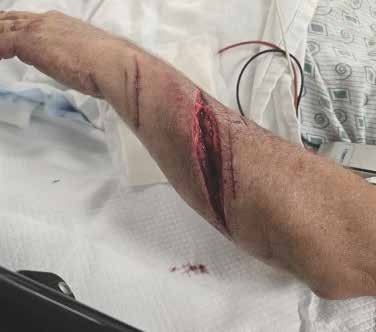13. Insurance For Protecting Your Investment and Challenges from Lawsuits.
RESOURCES - PUBLICATIONS
The Evolution of Spray Drones, Their Capabilities and Challenges for Pesticide Applications
13. Insurance For Protecting Your Investment and Challenges from Lawsuits
Protecting your investment in your drones and shielding yourself against liability claims are two reasons to consider insurance as part of your protection plan. Insurance is not just about replacing a drone after it crashes in a field. You also should consider having coverage in the event your drone hits a vehicle on the highway, crashes into a building, produces spray drift that lands on an organic farm or commercial apiary. Even more dangerous is if your drone hits a person who is unaware of the ongoing application.
Some drone owners inadequately insure their drones to save on their insurance premiums, but some state regulatory agencies may require operators to carry minimal liability insurance to cover drift or other accidents. Some drone operators also wrongly assume that their current vehicle insurance policy will automatically cover them for drone replacement and liability lawsuits. Without proper insurance coverage, everything you own could be up for grabs by the person who alleges your drone physically hurt them or damaged their crop or property.
As a general rule, insurance companies typically exclude coverage for all aerial applications, including those made by drones. When speaking with an insurance company, make sure they understand if you are seeking coverage for a drone that will be used for monitoring or if you are seeking coverage for a drone that will be applying pesticides. It might change their answer about whether they provide coverage and for how much.
Sometimes a policy might provide limited coverage for a drone used for monitoring and surveillance only. It is almost guaranteed that a drone that sprays pesticides will not be covered under most insurance policies. More than likely, your insurance company has contacts with other providers that deal with aerial applications and who can provide coverage.
These three important points deserve to be restated:
- Don’t assume that the liability insurance for your property, vehicle, or trailer will also cover your drone operation.
- Don't assume that the insurance you have for ground application equipment will also cover your drone.
- Just because you have a million-dollar liability policy that does not mean the drone is covered for that much. Read the policy carefully because you may only have a limited amount of coverage to replace a wrecked drone or when facing a lawsuit.
Know What Is in Your Policy
There are three main areas regarding spray drone insurance. Each area can be purchased or excluded, which can influence the premium.
- General liability property casualty
- Chemical liability/crop spraying liability
- Hull coverage
Let’s use an example to illustrate how these might fit together.
Let’s say your drone crashes into a car traveling on the highway. The crash ruptures the tank, which releases a fungicide into a nearby creek and causes a fish kill. The general liability coverage is used to cover damage to the car. It does not cover the fish kill nor damage to the drone. The chemical liability covers the fish kill. The hull coverage takes care of damages to your drone.
The main point is that the general property casualty insurance excludes any liability resulting from the contents of the spray tank. That can include a drift issue, or environmental hazard, or crop injury to a crop that was sprayed. People often think that a $1 million general liability limit will cover all exposures from flying a drone. But unless you carry chemical liability insurance, that is not true. Some insurance agents suggest that hull coverage is the least valuable of all, as its premium relative to coverage ratio is poor. If an operator is looking to save on insurance, hull coverage is the place to make a cut, not the general or chemical liability.
In any case, it is better to visit with your insurance agent to make sure you fully understand what your policy will and will not cover. Only a handful of companies in the United States offer special spray drone insurance with liability coverage. Without competition, a spray drone insurance premium can be $4,000 to $5,000 dollars versus a $35,000 cost for a new drone. But you must evaluate insurance costs with what you might lose in the event of an accident where someone is hurt. It is a rare event, but always possible.

Ask your insurance agents about coverage for medical care.